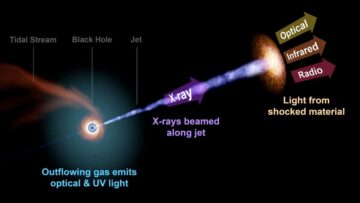
If you are reading this in the US or Canada, your will be aware that yesterday was Groundhog Day. And depending on your rodent of choice, you can look forward to either a long or short winter.
For readers outside of North America, a brief explanation. Legend says that a groundhog emerging from its den on 2 February can foretell how long winter will last. If the creature can see its shadow, there will be six more weeks of winter. But if there is no shadow, winter will be shorter.
Today, a mini-industry exists in some small towns in the US and Canada, where captive groundhogs are awakened and their shadows sought. But is there any scientific basis to this quaint custom? Not surprisingly, the answer is not really – at least according to an article in Salon by Nicole Karlis.
Cold and clear
In eastern North America, where the groundhog myth emerged, clear skies in the winter are often accompanied by cold temperatures – whereas cloudy winter days are often rather warm. Despite this connection between weather and shadows, the article says that the most famous groundhog – Pennsylvania’s Punxsutawney Phil – was only correct about 40% of the time over the past decade.
Karlis points out that 2 February has an astronomical significance in the solar calendar – being about halfway between the winter solstice and the spring equinox. As a result, it coincides with the ancient Celtic festival of Imbolc, which celebrates the coming of spring.
There are lots more fascinating facts and connections in Karlis’ article: “Why Groundhog Day has its roots in astronomy”.
Chameleon-like material
Winter or summer, in many climates it can be expensive to maintain a comfortable temperature inside buildings. On hot days, the exterior of a building will absorb heat and when it is cold the exterior will radiate precious heat away. Now, researchers at the University of Chicago have developed a chameleon-like material that can modify its thermal properties according to the outside conditions.
On a hot day, the material can radiate about 92% of the heat it contains, while on a cold day it only radiates about 7% of its heat. Po-Chun Hsu, who led the research, says, “This kind of smart material lets us maintain the temperature in a building without huge amounts of energy”.
The material is a layered structure in which a layer of copper can be created or removed by applying a small electrical current. When the copper layer is present, the material loses very little heat to its surroundings. But when the copper is removed, the material becomes very good at radiating heat.
Hsu and colleagues describe their new material in Nature Sustainability.
- SEO Powered Content & PR Distribution. Get Amplified Today.
- Platoblockchain. Web3 Metaverse Intelligence. Knowledge Amplified. Access Here.
- Source: https://physicsworld.com/a/astronomical-origins-of-groundhog-day-infrared-chameleon-runs-hot-and-cold/
- a
- About
- According
- america
- amounts
- Ancient
- and
- answer
- Applying
- article
- basis
- becomes
- being
- between
- Building
- Calendar
- Canada
- celebrates
- chicago
- choice
- clear
- colleagues
- comfortable
- coming
- conditions
- connection
- Connections
- contains
- Copper
- created
- creature
- Current
- custom
- day
- Days
- decade
- Den
- Depending
- describe
- Despite
- developed
- eastern
- either
- emerged
- emerging
- exists
- expensive
- explanation
- famous
- fascinating
- FESTIVAL
- Forward
- from
- good
- HOT
- How
- HTTPS
- huge
- image
- in
- information
- issue
- IT
- Kind
- Last
- layer
- layered
- Led
- Lets
- little
- Long
- Look
- Loses
- maintain
- many
- material
- max-width
- modify
- more
- most
- Nature
- New
- North
- north america
- outside
- past
- PHIL
- plato
- Plato Data Intelligence
- PlatoData
- points
- Precious
- present
- properties
- readers
- Reading
- Removed
- report
- research
- researchers
- result
- Shadow
- Short
- significance
- SIX
- skies
- small
- smart
- solar
- some
- spring
- structure
- summer
- The
- their
- thermal
- thumbnail
- time
- to
- towns
- true
- university
- University of Chicago
- us
- warm
- Weather
- Weeks
- which
- while
- WHO
- will
- Winter
- without
- Your
- zephyrnet












